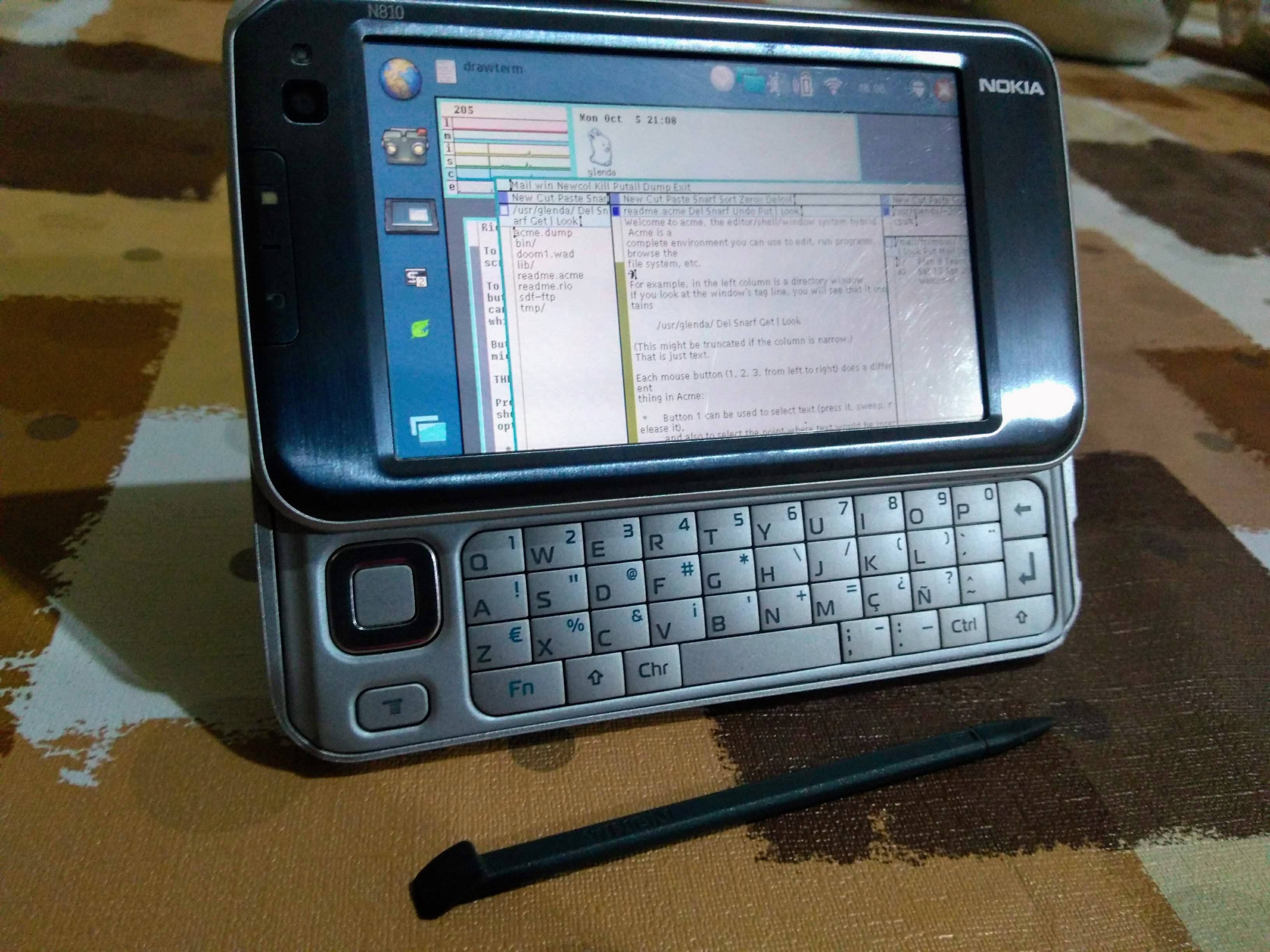The Nokia N810 Deserves More Love

My N810 running DrawTerm connected to 9front
Perhaps it’s just my impression, but the Nokia N810 is a device that seems to have been forgotten by history, something that generated some hype for less than 2 years and ended up becoming just another item of curiosity in Nokia’s extensive device list on Wikipedia. This hype included a fairly active hacking and modifications scene for the device. However, all of this seems to have come to a halt, and since then, we’ve heard little news about it.
Unlike its older sibling, the N900, which still has an active community to this day, I won’t delve into the discussion of the differences between them or what made the N900 the darling of the community. I also have great appreciation for the N900. But let’s go back in time a bit.
The Nokia N810 was part of a product line from Nokia that fell into the category of “Internet appliances.” Basically, these devices were small and allowed access to the internet, email, news, and other functionalities. It may seem quite basic and straightforward by today’s standards, right? However, essentially, they were tablets before the concept of tablets even existed. We’re talking about devices that, as early as 2005, ran the Linux operating system. They had their own ecosystem, filled with easily installable apps and room for the development of new ones for the system.
Released in late 2007, the N810 had the following specifications:
- CPU: TI (Texas Instruments) OMAP 2420 (400 MHz)
- RAM: 128 MB
- Internal Storage: 2 GB
- Operating System: Internet Tablet OS 2008 Edition
- GPU: PowerVR MBX (Without acceleration due to the lack of driver support from Nokia)
- USB: Yes, mini USB 2.0 with OTG support
- Memory card slot: Yes, with support for miniSD cards
The list is long, but you can get an idea.
For its purpose, the specifications were not bad at all, especially considering the time. However, there are some personal criticisms that can be made.
Developing for embedded systems may seem simple and beautiful nowadays, but at that time, everything was still evolving. Nokia’s choice of Scratchbox was, at the very least, curious and interesting. I believe that, at that time, such a system made a lot of sense, especially for less experienced developers who simply wanted to port or create apps for their system without having to download a set of tools and perform complex internet operations to make everything work. It was an integrated system that brought many benefits but also some challenges.
Being stuck in a chroot and creating a simple GTK application and managing all the dependencies was great. However, when it came to creating something more complex involving the kernel or system libraries, things started to get a bit complicated. Not to mention the choice of a GCC version that, at that time, might not have made sense anymore, at least in my opinion.
If I were to detail all the problems related to Scratchbox here, this text would become very lengthy (perhaps an idea for a future post). However, I believe my biggest issue with the N810 is not just about it but rather the general scenario of that time, which involved embedded devices with this type of application. The open-source world can bring wonders, but it can also be quite chaotic.
For example, each individual made their own modifications to the kernel and made them available on their personal website (self-criticism?), instead of working collaboratively on something bigger. The result was that there were dozens of different kernels and images in different trees, with various configurations and patches, often incompatible with each other. It wasn’t a situation of “take my flavor and enjoy,” but rather “take my flavor, try it, and whether you like it or not, well, it’s up to you. Here’s the recipe, and I don’t know if I’ll be back tomorrow.”
It was a chaotic mess. Many of these projects would still be useful today, as the N810 is not fully compatible with current kernels. There are drivers for some of the chips it uses, but that’s about it. Many of these projects solved issues that have not been resolved to this day to make the N810 functional with a modern kernel. There were patches and configurations with proper power and battery system calibration and for the LCD controller, etc. However, most of them were swept into the internet’s oblivion.
But back to the device itself. Yes, I know that the N810 had a different proposition than the first iPhone released in the same year. One example is the resistive screen. All previous models used this technology, but Nokia could have done something different to improve the user experience. Not that I complain about Hildon and Maemo; they did a great job for those using the capacitive stylus. However, my biggest concern is related to the choice of the processor and GPU.
Maybe I’ve focused too much on the problems, maybe this is a rant… Who cares? The important thing is that the N810 is a wonderful device and deserves more love. I own an N810 and its sibling, the N800, and using them today is cathartic. There are so many possibilities and elegance.